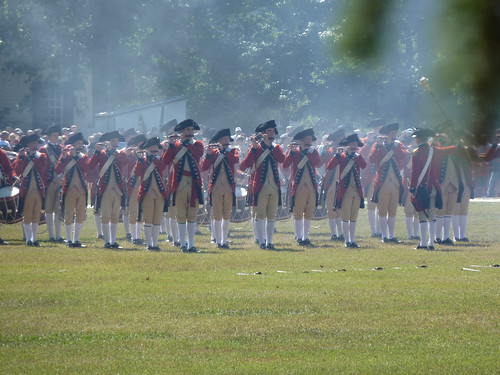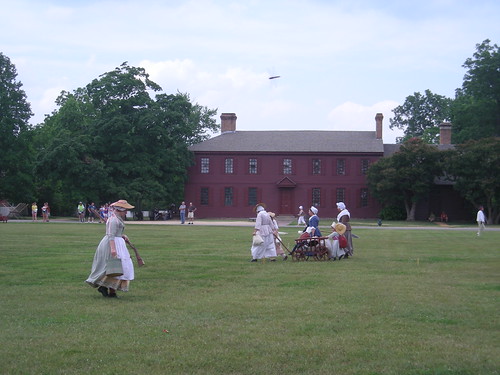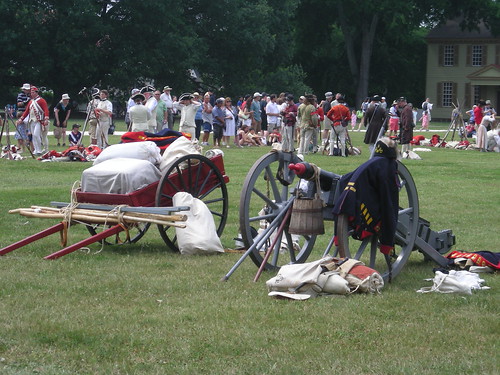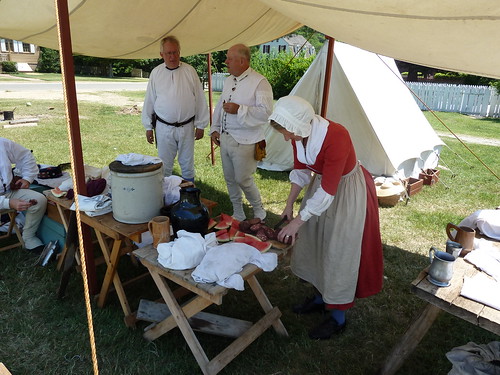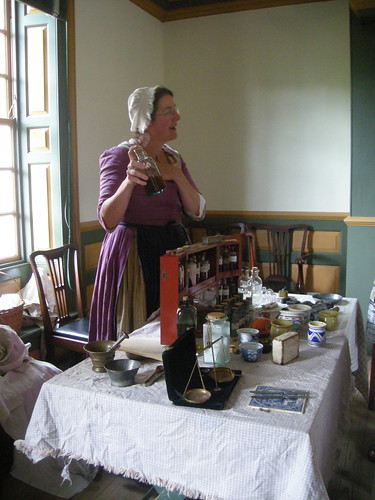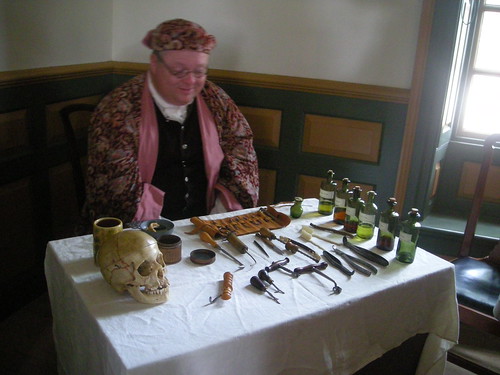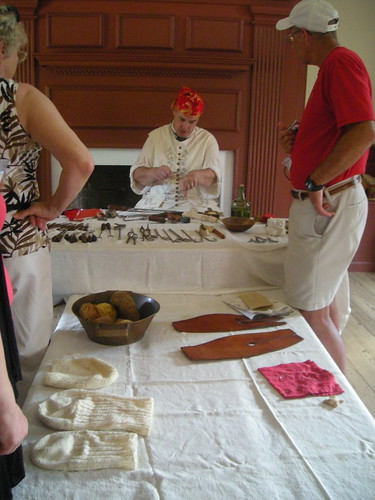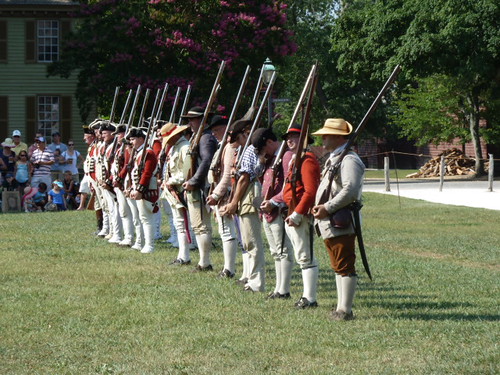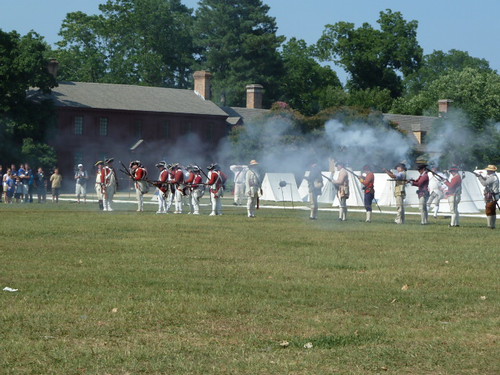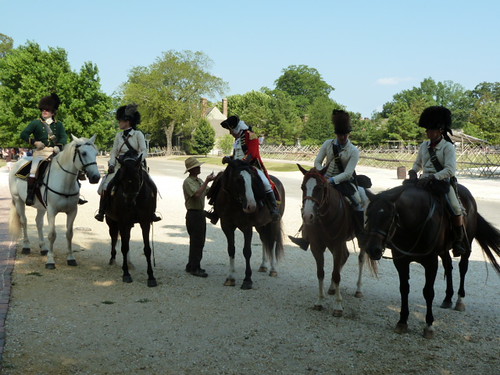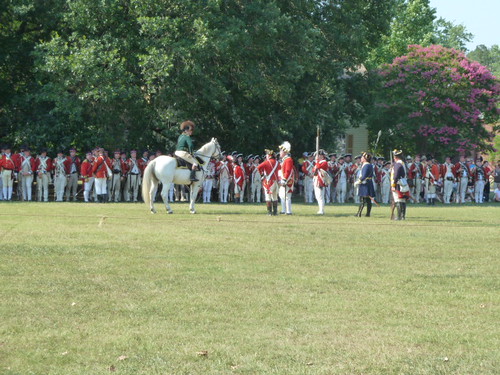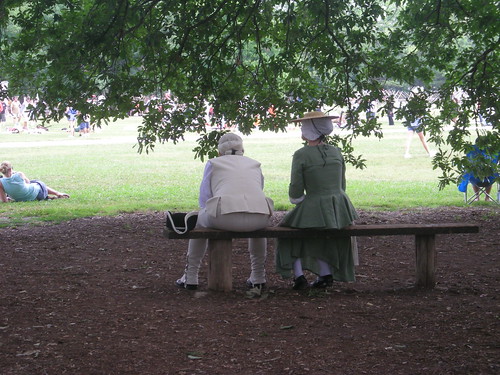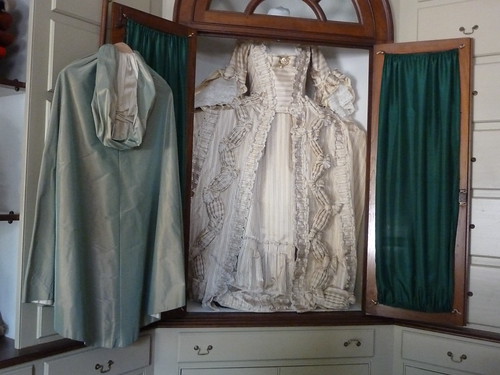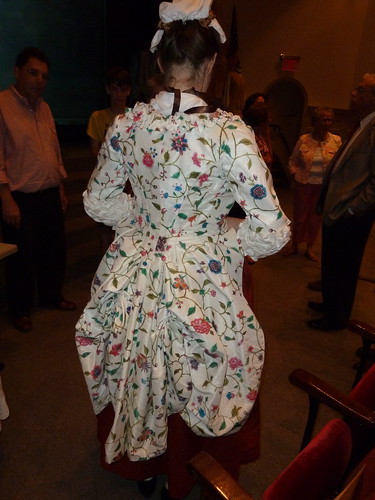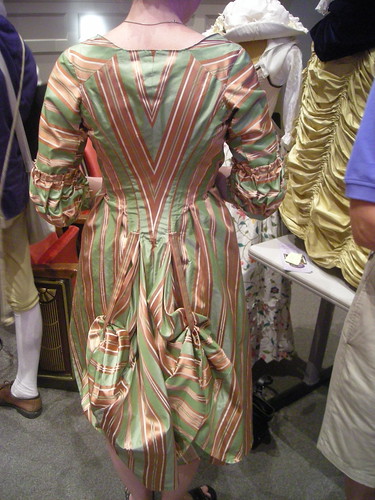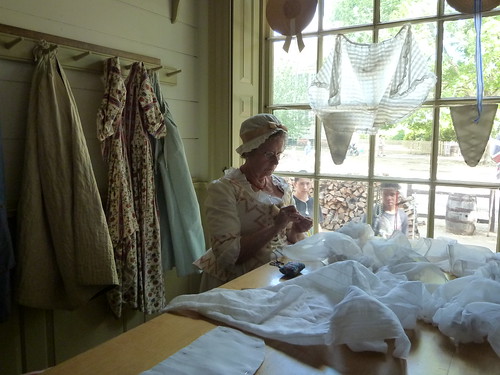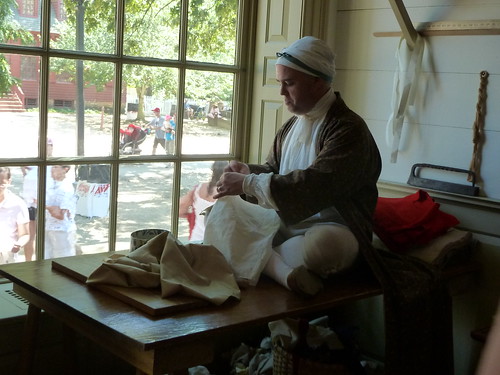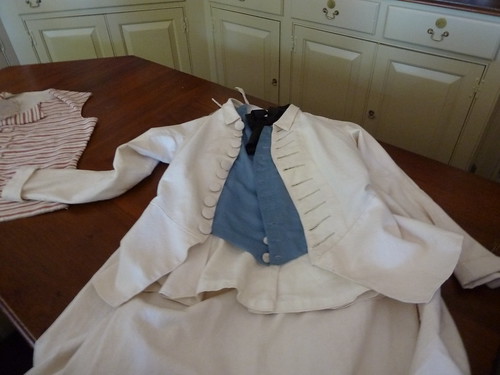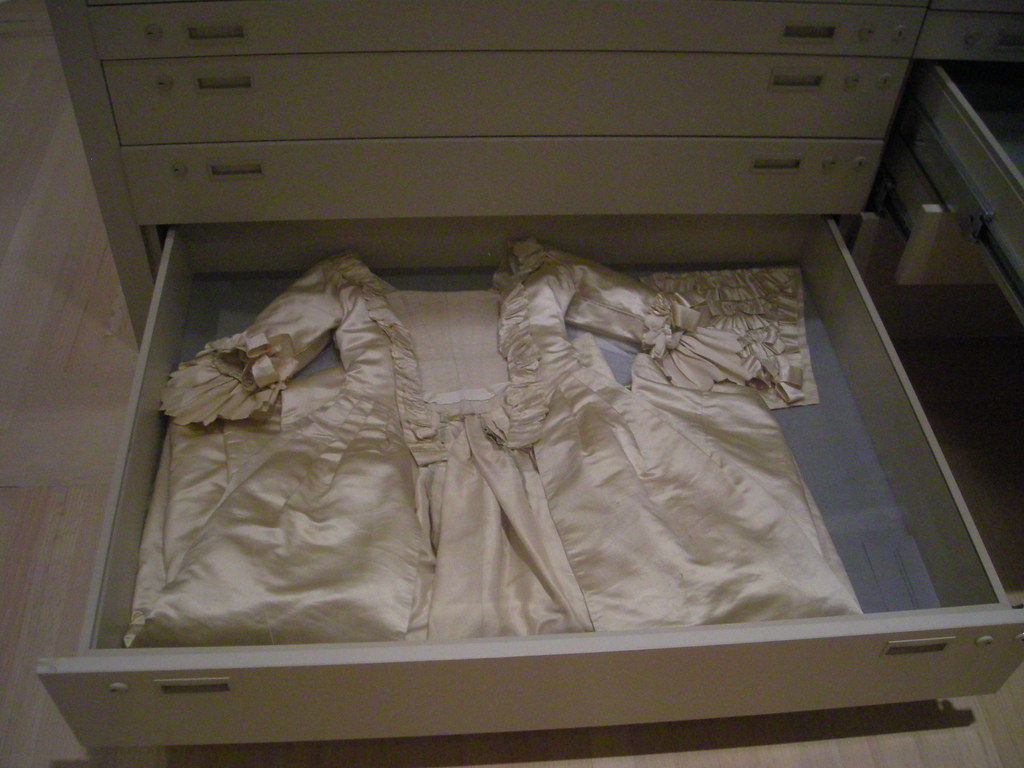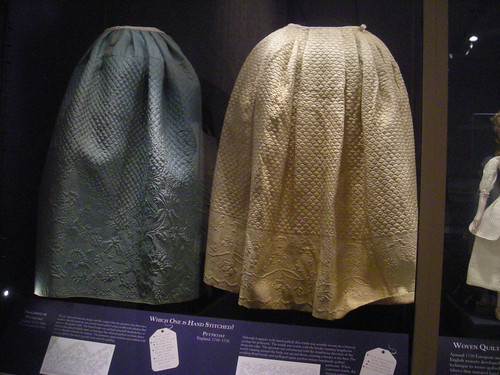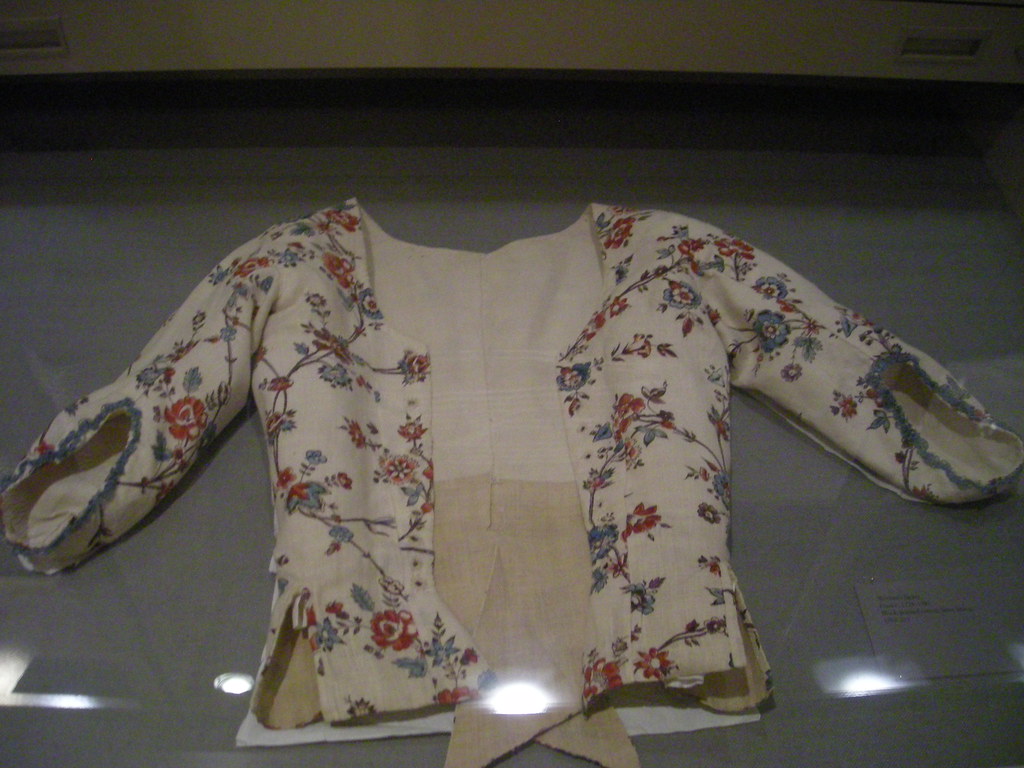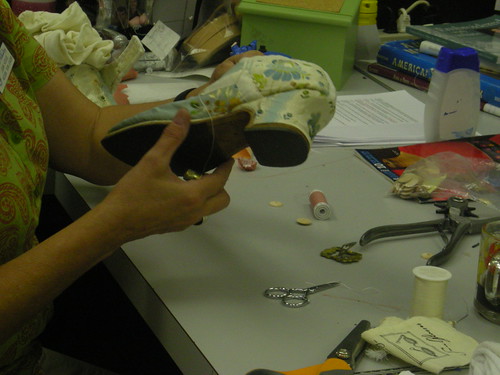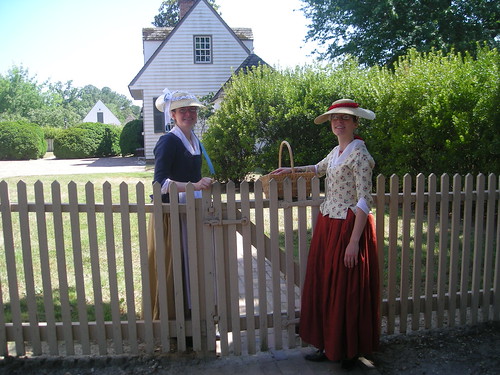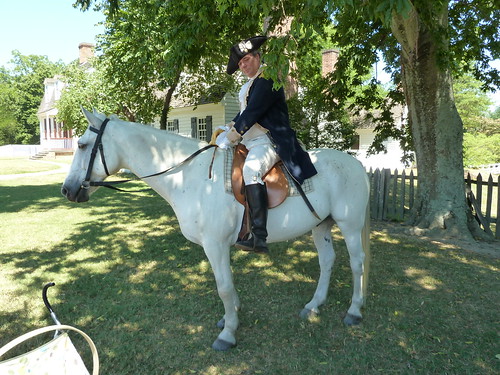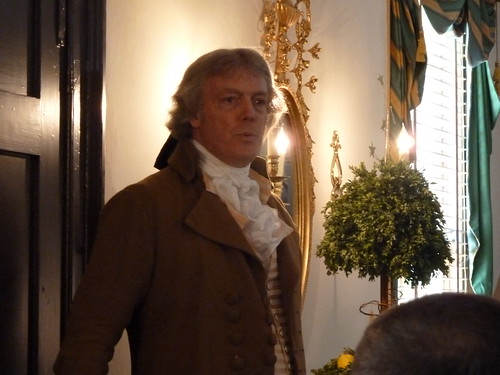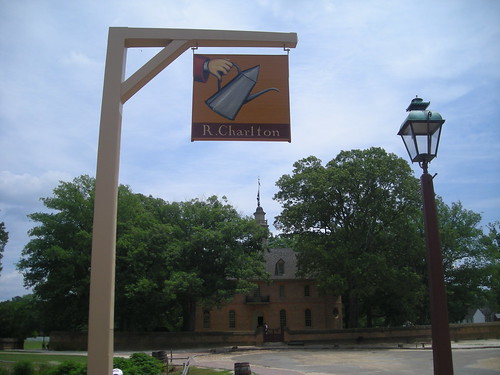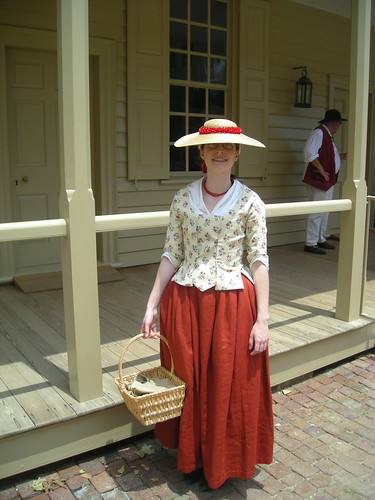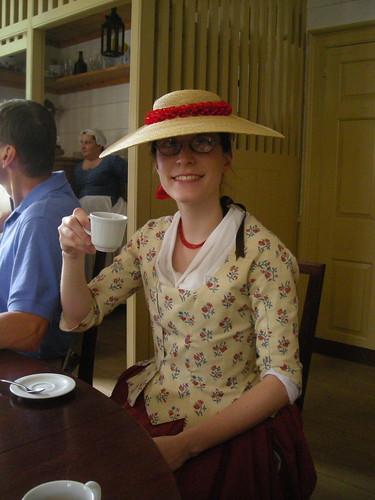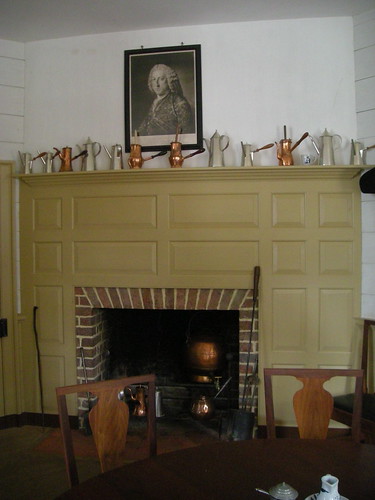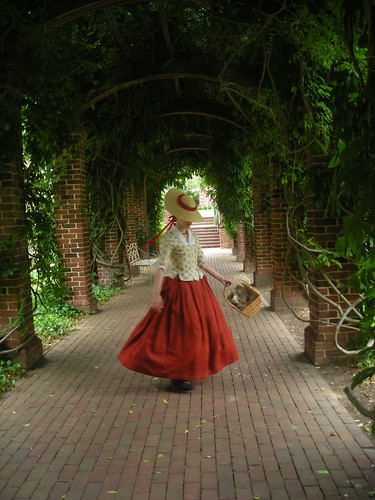"I believe that [the 4th of July] will be celebrated by succeeding generations as the great anniversary festival...It ought to be celebrated by pomp and parade, with shows, games, sports, guns, bells, bonfires, and illuminations from one end of this continent to the other."
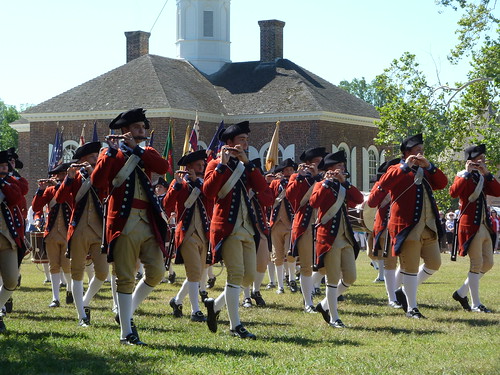
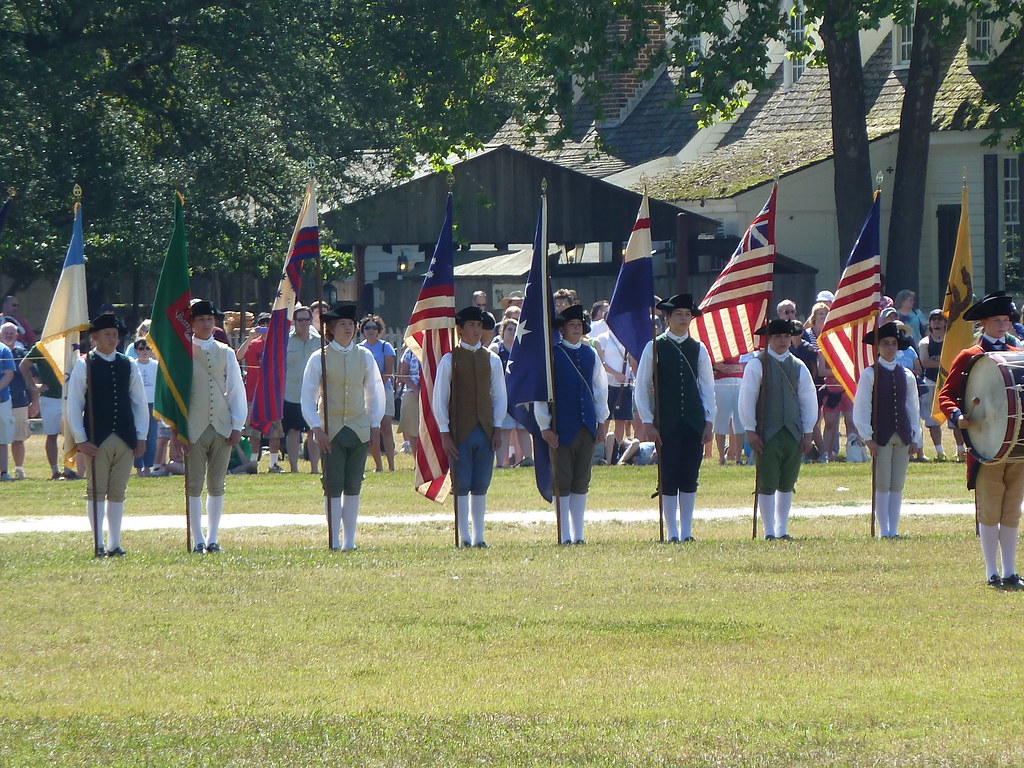
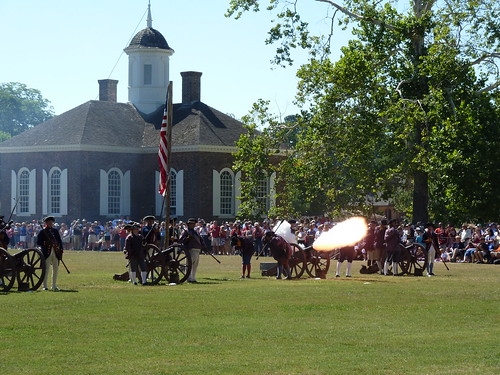
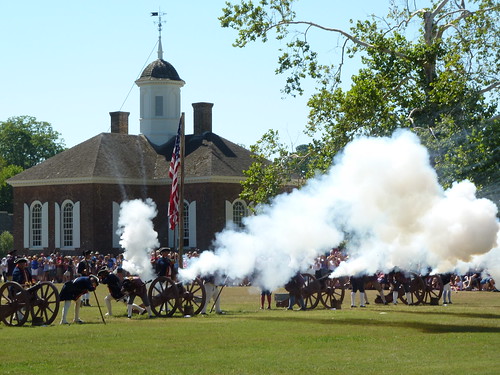
An hour later, Duke of Gloucester Street became a literal sea of people. In all our visits to CW at various times of the year, we’ve never seen anything like it as bobbing heads stretched from sidewalk to sidewalk, gathered from the Capitol gates to what easily amounted to a quarter of a mile down DOG Street. The semi-circle in front of the Capitol was left open, its perimeter held by half a dozen CW interpreters representing all different walks of American life. Two men emerged onto the balcony and began reading the Declaration of Independence.
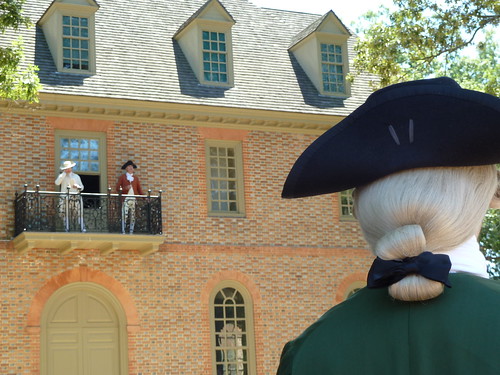
The interpreters took it in turn on the ground to chime in with each of the listed grievances, and periodic applause and cheers arose from the assembled listeners who could not fail to be inspired by and proud of the sentiments being proclaimed.
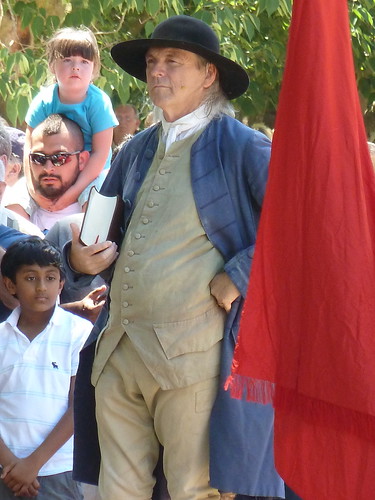
A Fifes and Drums concert behind the courthouse entertained the field-full of picnickers as darkness fell. The Junior Corps performed first, under the leadership of Amy Miller; they were followed by the Senior Corps, directed by Lance Pedigo. The skill and precision of these young musicians is really something and it always sets the goosebumps rising. As the senior group neared the end of their final tune, the fireworks began. Ten minutes of smaller fireworks served as an introduction of sorts to two spectacular finale displays that cheerfully yet eerily illuminated the historic buildings beneath. John Adams, needless to say, would have been proud.
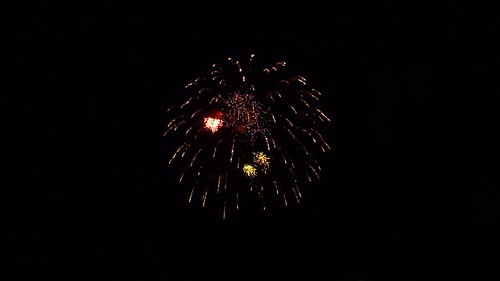

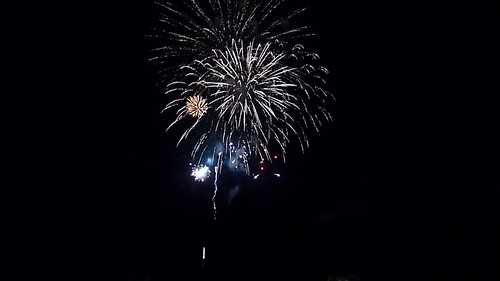

John Adams
Despite the apparent anachronism, the Fourth of July celebrations at Colonial Williamsburg are particularly well-suited to the time, the place, and the spirit of the holiday. We’ve spent some Fourth of Julys in unique places (the most memorable being at the Boston Pops Esplanade and in Canada (yes, Canada) on Prince Edward Island). But the entire family agreed that this was by far and away the best and most unforgettable July fourth experience we’ve ever had.
The Williamsburg Fourth begins with the morning Salute to the States. A line of canons are positioned in a row behind the courthouse, each with its own firing team. Promptly at ten, the Fifes and Drums come marching in, their unique and spirited sound saturating the air and infecting the crowd with the tension of anticipation and a celebratory mood.
The Williamsburg Fourth begins with the morning Salute to the States. A line of canons are positioned in a row behind the courthouse, each with its own firing team. Promptly at ten, the Fifes and Drums come marching in, their unique and spirited sound saturating the air and infecting the crowd with the tension of anticipation and a celebratory mood.

Following them are thirteen men carrying flags representing each of the colonies who fought for independence. As each flag is presented, the Fifes and Drums play a tune significant to each colony, and members of the crowd cheer when their state is announced and a canon is fired.



We were the only family who raised a huzzah for Connecticut, but Virginia predictably initiated a deafening round of cheers as “The World Turned Upside Down” serenaded the crowd and a volley of canon fire clouded the air with smoke so picturesque that it was easy to feel transported 234 years back in time.

The interpreters took it in turn on the ground to chime in with each of the listed grievances, and periodic applause and cheers arose from the assembled listeners who could not fail to be inspired by and proud of the sentiments being proclaimed.

A Fifes and Drums concert behind the courthouse entertained the field-full of picnickers as darkness fell. The Junior Corps performed first, under the leadership of Amy Miller; they were followed by the Senior Corps, directed by Lance Pedigo. The skill and precision of these young musicians is really something and it always sets the goosebumps rising. As the senior group neared the end of their final tune, the fireworks began. Ten minutes of smaller fireworks served as an introduction of sorts to two spectacular finale displays that cheerfully yet eerily illuminated the historic buildings beneath. John Adams, needless to say, would have been proud.





